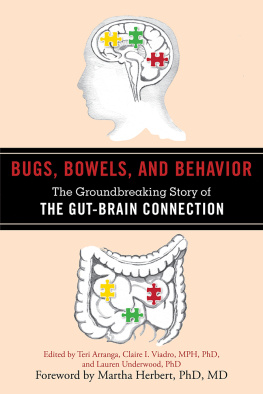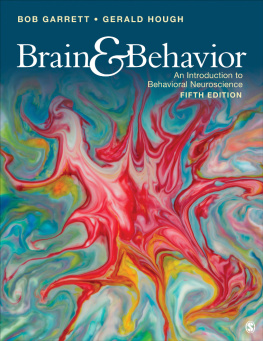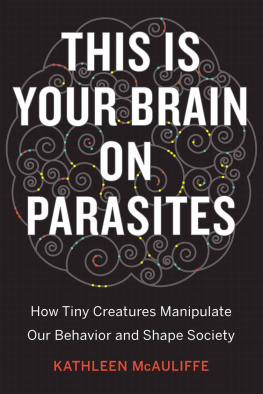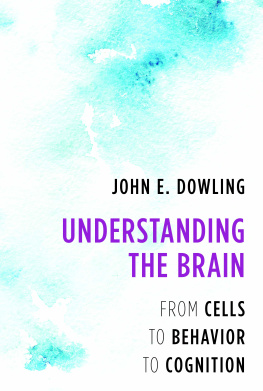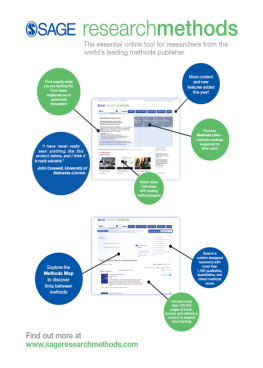An Introduction to Brain and Behavior
Bryan Kolb
University of Lethbridge | Ian Q. Whishaw
University of Lethbridge | G. Campbell Teskey
University of Calgary |
Fifth Edition
This book is dedicated to Cornelius H. Case Vanderwolf (19352015), with whom each of us studied. Case did his Ph.D. with Donald O. Hebb and postdoctoral research with Konrad Ackert and Roger Sperry, figures whose research is featured prominently in this book. He was an advocate of the theory that the study of behavior provided the window to the organization of the brain, and he was especially encouraging of our first attempt at book writing.
Publisher, Psychology and Sociology: Rachel Losh
Senior Acquisitions Editor: Daniel DeBonis
Development Editor: Barbara Brooks
Assistant Editor: Katie Pachnos
Senior Marketing Manager: Lindsay Johnson
Marketing Assistant: Morgan Ratner
Executive Media Editor: Rachel Comerford
Associate Media Editor: Jessica Lauffer
Director, Content Management Enhancement: Tracey Kuehn
Managing Editor, Sciences and Social Sciences: Lisa Kinne
Project Editor: Edgar Doolan
Media Producer: Elizabeth Dougherty
Copy Editor: Kate Daly
Senior Photo Editor: Cecilia Varas
Photo Researcher: Richard Fox
Senior Production Manager: Paul Rohloff
Director of Design, Content Management Enhancement: Diana Blume
Design Manager: Blake Logan
Interior Design: Charles Yuen
Art Manager: Matthew McAdams
Illustration Coordinator: Janice Donnola
New Illustrations: Evelyn Pence, Matthew McAdams
Composition: codeMantra
Printing and Binding: RR Donelley
Cover Art: ALFRED PASIEKA/SCIENCE PHOTO LIBRARY/Getty Images
Chapter Opener Illustrations: Katherine Streeter
Library of Congress Control Number: 2015957301
ISBN-13: 978-1-4641-0601-9
ISBN-10: 1-4641-0601-0
Copyright 2016, 2014, 2011, 2006 by Worth Publishers
All rights reserved.
Printed in the United States of America
First printing
Worth Publishers
One New York Plaza
Suite 4500
New York, New York 10004-1562
www.macmillanhighered.com
ABOUT THE AUTHORS
Bryan Kolb received his Ph.D. from The Pennsylvania State University in 1973. He conducted postdoctoral work at the University of Western Ontario and the Montreal Neurological Institute. He moved to the University of Lethbridge in 1976, where he is Professor of Neuroscience and holds a Board of Governors Chair in Neuroscience. His current research examines how neurons of the cerebral cortex change in response to various factors, including hormones, experience, psychoactive drugs, neurotrophins, and injury, and how these changes are related to behavior in the normal and diseased brain. Kolb has received the distinguished teaching medal from the University of Lethbridge. He is a Fellow of the Royal Society of Canada and of the Canadian Psychological Association (CPA), the American Psychological Association, and the Association of Psychological Science. He is a recipient of the Hebb Prize from CPA and from the Canadian Society for Brain, Behaviour, and Cognitive Science and has received four honorary doctorates. He is a Senior Fellow of the Experience-Based Brain and Behavioral Development program of the Canadian Institute for Advanced Research. He and his wife train and show horses in Western riding performance events.
Ian Q. Whishaw received his Ph.D. from Western University and is a Professor of Neuroscience at the University of Lethbridge. He has held visiting appointments at the University of Texas, University of Michigan, Cambridge University, and the University of Strasbourg. He is a fellow of Clair Hall, Cambridge, and of the Canadian Psychological Association, the American Psychological Association, and the Royal Society of Canada. He is a recipient of the Canadian Humane Society Bronze Medal for bravery, the Ingrid Speaker Gold Medal for research, and the distinguished teaching medal from the University of Lethbridge. He has received the Key to the City of Lethbridge and has honorary doctorates from Thompson Rivers University and the University of Lethbridge. His research addresses the neural basis of skilled movement and the neural basis of brain disease, and the Institute for Scientific Information includes him in its list of most cited neuroscientists. His hobby is training horses for Western performance events.
G. Campbell Teskey received his Ph.D. from Western University in 1990 and then conducted postdoctoral work at McMaster University. In 1992 he relocated to the University of Calgary, where he is a professor in the Department of Cell Biology and Anatomy and the Hotchkiss Brain Institute. His current research program examines the development, organization, and plasticity of the motor cortex, as well as how seizures alter brain function. Teskey has won numerous teaching awards, has developed new courses, and is a founder of the Bachelors of Science in Neuroscience program at his home university. He serves as Education Director for the Hotchkiss Brain Institute and chairs the Education Committee of Campus Alberta Neuroscience. His hobbies include hiking, biking, kayaking, and skiing.
CONTENTS IN BRIEF
CONTENTS
PREFACE
The Fifth Edition of An Introduction to Brain and Behavior continues to reflect the evolution of behavioral neuroscience. In keeping with this evolution, we welcome G. Campbell Teskey, whose fresh perspectiveespecially on topics related to neurophysiology and nervous system disordersenhances our author team.
Other major changes in this edition include a deeper emphasis on genetics and epigenetics throughout. Epigenetics is especially important for understanding brain and behavior because environmentally induced modifications in gene expression alter the brain and ultimately behavioral development. Thus, experienceespecially early experiencemodifies how brain development unfolds. These modificationsof at least some behavioral traitscan be transferred across generations, a process known as epigenetic inheritance. We introduce it in the case study at the end of .
This edition fully addresses advances in imaging technology, including techniques that are fueling the burgeoning field of connectomics and progress toward a comprehensive map of neural connectionsa brain connectome. These exciting advances are especially relevant in the second half of the book, where we review higher-level functions.
Imaging advances and epigenetics concepts and research continue as a prime focus in this revision but are not our sole focus. In adds new research on lipid neurotransmitters and detail on receptor subtypes.







